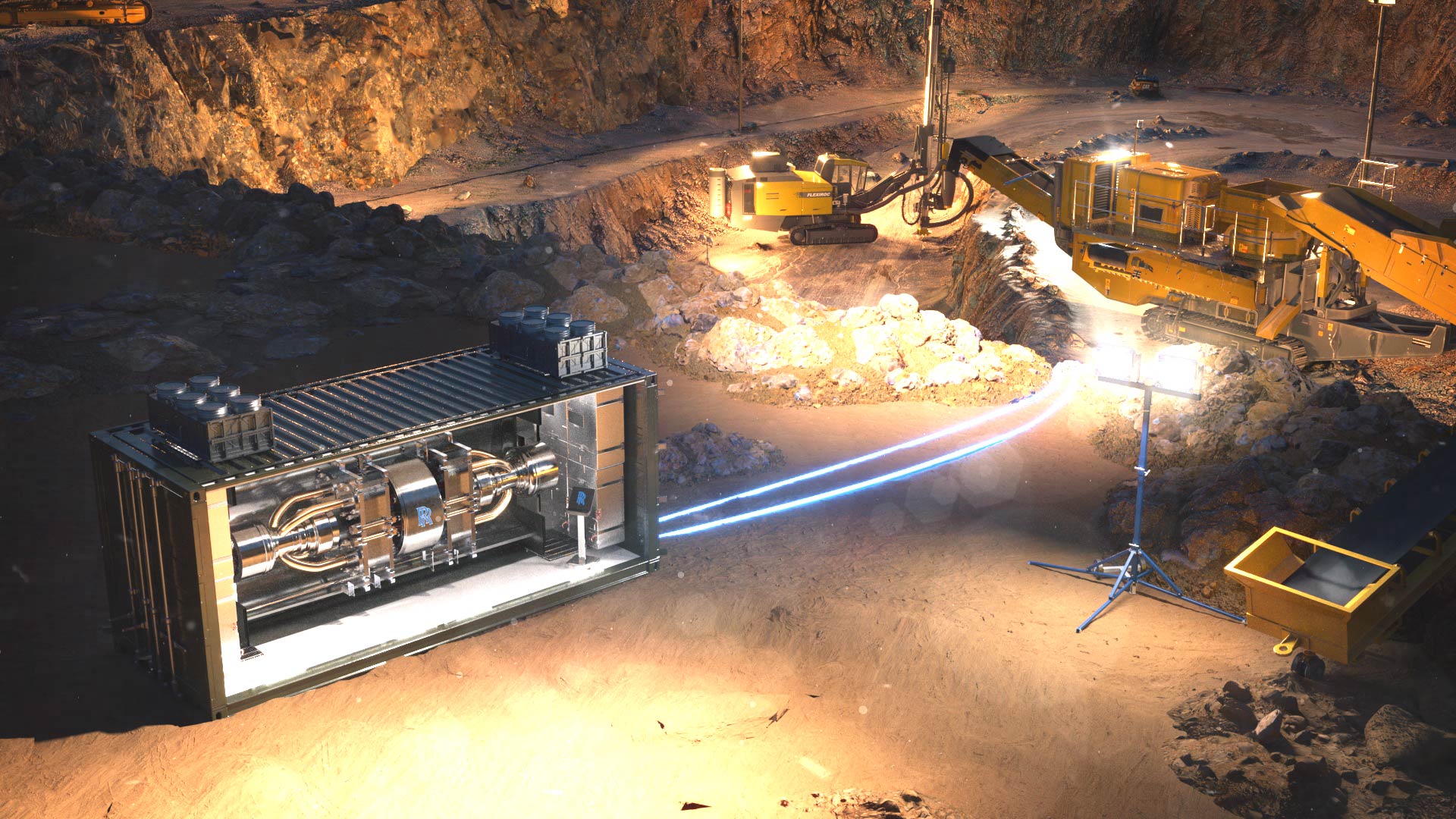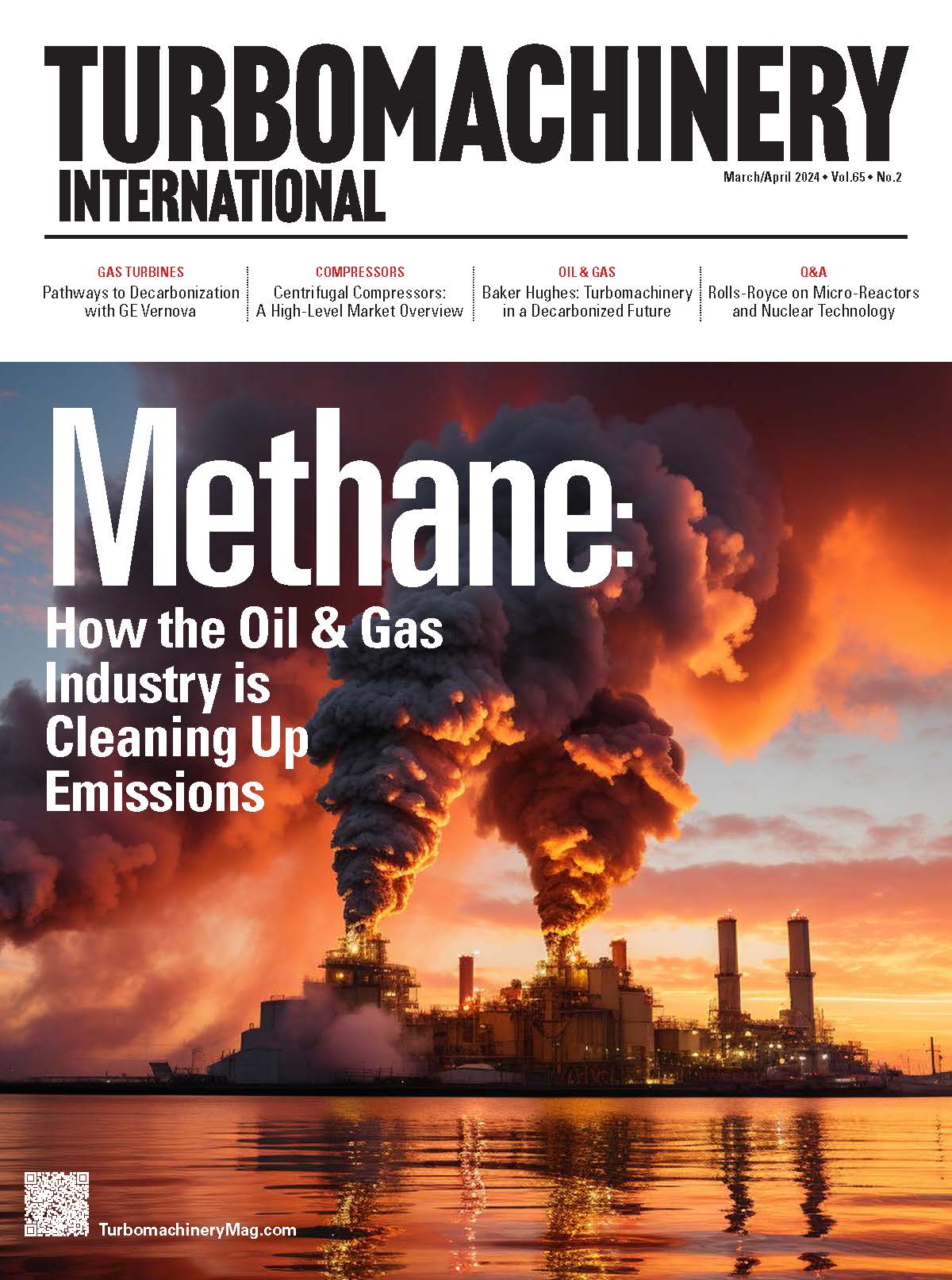Q&A: Micro-Reactors with Rolls-Royce
Rolls-Royce is using its nuclear and turbomachinery heritage to create micro-reactors for space and terrestrial applications.
Turbomachinery International spoke with James Montgomery, Chief Design Engineer, Novel Nuclear, and John Mason, Systems Design and Integration Technical Specialist of Rolls-Royce, to take a deep dive into micro-reactors—compact, portable rectors that produce thermal energy for use as heat or electrical power—and give readers an inside look at the company’s innovations, challenges, and design considerations for its micro-reactor and nuclear technology in terrestrial and lunar applications.
Q: What is a micro-reactor, and how does it differ from a small modular reactor (SMR)?
Montgomery: Micro-reactors are very small scale, in the range of 1 MWe - 10 MWe compared to a typical grid-supplying power plant in the gigawatt range and compared to the new generation of SMRs in the 1/2 GW range—micro-reactors are much smaller than that. We have two potential applications for the micro-technology we’re working on in the United Kingdom: The first one is the terrestrial variant for supplying power to different applications on Earth; and the second is the space micro-reactor that has potential applications for the lunar base as part of the space program and, in the longer term, for power and propulsion applications on satellite and deep-space missions.
Q: What goes into designing a micro-reactor, and how are they customized?
Montgomery: At Rolls-Royce, we have a great pedigree in designing complex systems like this, so the first step in that process is to work with potential end users to understand the user requirements and use cases where we can get value from the technology. Then we’ll work through the process of preliminary design and size of the plant, understanding what the technology can do and where the technology gaps might be. That launches us into a technology program to acquire the technologies we need.
The micro-reactor plant is interesting because it’s genuinely a new product for us at Rolls-Royce, as with the rest of the industry. We’ve pieced together some of our pedigree from the nuclear side and the turbomachinery side that we have developed over many years for aerospace and industrial applications.
Mason: Across the Rolls-Royce group, we have experience in several different industries and capabilities. We have large civil engines that power airliners. We are engaged in combat aircraft and military transports, and a large element of our business looks at turbomachinery for turbo-compressors— centrifugal machines, turbochargers for yachts, large mining and industrial applications, etc. We can pull from all these capabilities and experiences and apply them to new industries and new technologies.
Micro-reactor mining

Q: What advantages do micro-reactors offer, and in what environments/locations do they work best?
Montgomery: In terms of the terrestrial variant of the micro-reactor, imagine a small-scale power plant in a shipping container-sized envelope that can be deployed to a remote location where access to fossil fuels is strained—that’s our vision for the micro-reactor. The great thing about a micro-reactor is, depending on its size and detailed design, it can be fueled for five to 10 years of operation, which means if you are a remote-unit or -running community or a remote military installation, it makes you resilient to the risks surrounding the fossil-fuel supply chain. Also, as a net-zero technology, it eliminates reliance on fossil fuels for communities.
The space micro-reactor is a completely different application. Many different missions are looking to use these kinds of power plants: In particular, NASA’s Fission Surface Power Project, as part of the Artemis Mission, was looking to develop a power plant for use on the lunar base. There, it’s about operating in areas where solar power is limited, particularly around the south part of the moon where we’re looking to explore, so having a nuclear source that can run reliably day and night is a game changer for moon-based operations.
In the long term, nuclear can be used as a source of power for propulsion and space missions, particularly for deeper space missions where solar power become weaker.
The Artemis Mission aims to build an infrastructure to Mars, and this technology could extend to those kinds of missions' demands.
Space colony

Mason: From a power-conversion viewpoint on our terrestrial applications, we can utilize our knowledge and expertise gained from our naval applications. These are designed and packaged to fit in a confined space envelope, similar to an ISO container, which is needed to transport the system. With an open Brayton Cycle, we are simply replacing the combustion chamber, where normally fuel is burned, with a heat exchanger to the reactor.
Where things get very interesting from a power-conversion point of view is with space applications. We still use Brayton cycles, but operation in space requires a closed cycle—we can’t continue to take air in the front and push it out the back, so we take the exhaust gas out of the back of the turbine and recondition that flow back to where we started before it re-enters the compressor. So, we’re looking at the most efficient way to do that with recuperation intercooling and various other things.
This presents challenges, but it also gives us additional design levers—because it’s a closed cycle, we can change the working fluid, so, for example, we don’t have to use air as we do with the open cycles for civil aircraft. We can also change the start conditions—optimize it by changing the pressures and temperatures at the beginning of the cycle. Depending on the requirements of the system, we can pick and choose where the design point of the turbomachinery sits.
Q: Can you talk about the use of nuclear energy and its role in a sustainable future?
Montgomery: One of the key technologies that enable micro-reactors is the development of coated-particle nuclear fuel, TRistructural ISOtropic (TRISO) fuel: a kernel of uranium fuel coated in different layers of carbon-like material that has different functionalities for protecting the fuel from overheating and for containing fission products within that small particle in a resilient way. This means that we can potentially simplify the design of the rest of the plant and hence enable much smaller plants more than we’ve historically been able to achieve safely. There are other aspects of the plant as well that are being looked at within the industry to enable a passively safe nuclear design—by that we mean it’s effectively fail-safe from the way it responds to different failure modes.
Mason: In terms of power conversion, the key impact of the micro-reactor and heat transfer from the reactor into our cycle is the peak temperature that goes with the fuels and technologies of that reactor. They are much lower than the operating temperatures of civil airliners, and the technology in the power conversion and Brayton Cycle is not being pushed by the cycle’s temperature levels. It gives us other headaches in terms of trying to design the cycle for high efficiency to minimize the size of the overall system, the reactor core, and the amount of fuel needed for the lifetime of the application.
Q: What is new in terms of design?
Montgomery: One of the interesting applications for terrestrial micro-reactors is the need to safely transport and operate it at a remote site. As part of our concept, we'll have a containerized solution and ship it to the site using conventional transport. That itself poses design challenges to the way that you transport the radioactive and spent fuel when the site has been decommissioned. There's a lot of work in the industry looking at that.
It gives a flexible solution to the customer because you could have multiple nuclear reactor modules to create nuclear heat combined with multiple modules of John's power-conversion technology to scale the plant to different applications, which could also include the supply of heat for chemical and industrial processes.
Mason: The primary fluid used in the Brayton Cycle provides the coolant for the reactor as well. So, there are a lot of scenarios that we don't normally face when designing the system that we need to incorporate additional functionalities for and make sure there's the right redundancy to provide the safety case for these reactors. There are cases that in a normal application—for example, a civil airliner in which you would reduce the power or shut the engine down and rely on other engines to complete the flight safely—that may not work for the nuclear side because it needs to flow continuously to cool the reactor, which will have a big impact on how the system is designed.
Another factor is the environment in which these systems will operate. There are opportunities to use these in various conditions, from cold, Arctic conditions to hot, desert-like conditions such as in mining communities, and these intake conditions for terrestrial systems have a very big impact on their performance. We have to account for these factors when designing what the system and turbomachinery look like to ensure good performance and efficiency throughout each case.
Ambient temperature is a huge factor for space conditions in lunar applications—the day-to-night temperature varies between 100° Kelvin - 385° Kelvin, that’s -300° F - +230° F. That will have a huge impact on our ability to reject heat from the system through the radiators to return the fluid to its starting condition before it goes back through the compressor. From a systems-level point of view, there are many things that we need to think about which do we design for? Peak efficiency of power conversion, which minimizes the size of the reactor plant needed to launch and the amount of fuel you need to take with you? Or do we design for the minimum size of radiators that have to be packaged into the rocket to get the reactors there in the first place? There are many things we have to think about that we don’t normally consider.
Montgomery: This is a really interesting product for us because it brings together our aerospace heritage and our knowledge of how to build lightweight aerospace systems with our nuclear heritage. But this is our first nuclear application where weight has been a real concern, both from a transport point of view for the terrestrial reactor and for the spacecraft where the payload mass and volume are key constraints on the system. So, that's giving us a real challenge and driving us to some interesting packaging solutions for the space reactor in particular.
Hear the full interview on the TurboTime Podcast: Micro-Reactors with Rolls-Royce.
